At a glance: This article lists ten popular types or subgenres of horror fiction, with some recommended novels for each category.
Dividing the horror genre into individual subgenres is harder than you might think. (Trust me on this.) There’s a lot of overlap and crossover. Some novels straddle the line between two or more subgenres. Other books blaze a path of their own and don’t fit squarely into a single category.
For example: Zombies. Do they stand alone in their own genre? There’s certainly enough material out there to warrant it. Or should they be lumped into the supernatural category with vampires, werewolves and the like? Where do you draw the lines? Like I said, it gets blurry.
So, for the sake of simplicity, I’ve broken it up into 10 primary categories.
10 Horror Novel Subgenres With Recommended Reading
Horror novels, as a genre, date back to the 1800s. They’ve changed a lot over the years, branching out into new directions. Even so, most of the books available today fall into a small group of subgenres. Here’s a look at the most common types of horror fiction subgenres, with some book recommendations for each category.
1. Comedy Horror
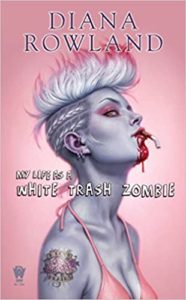
This horror novel subgenre caters to readers who like a good scare, but also like to come up for air once in a while. Instead of delivering 300+ pages of continuous dread, these books punctuate the horror with moments of humor and irreverence.
The comedy-horror subgenre is well represented in the film world. Movies like Shaun of the Dead, Ready or Not, and Zombieland have enjoyed critical and commercial success.
You probably know that already. What you might not know is that there are also many horror-comedy novels out there, just waiting to entertain you.
Recommended novels in this horror subgenre: John Dies at the End, by David Wong. Hold Me Closer, Necromancer, by Lish McBride. Gil’s All Fright Diner, by A. Lee Martinez. The Zombie Survival Guide, by Max Brooks. My Life as a White Trash Zombie, by Diana Rowland.
2. Dark Fantasy
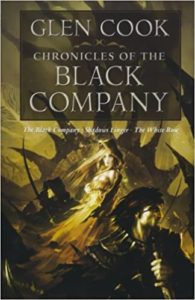
This type of horror novel offers readers the best of two genres — horror and fantasy. They take common components of fantasy fiction, like creatures and magic, and add a dark layer of horror on top. What’s not to love?
Some of George R.R. Martin’s work fits the bill. If the White Walkers from his A Song of Fire and Ice series don’t represent horror, then I don’t know what does. Those books also contain heavy fantasy elements, including dragons and magic.
Neil Gaiman also does a lot of dark fantasy (or fantasy-horror, if you like). Anne Bishop is another excellent writer working in this horror subgenre.
Interesting books in this category: The Citadel of Fear, by Gertrude Barrows. The Black Company, by Glen Cook. Daughter of the Blood, by Anne Bishop.
3. Gothic
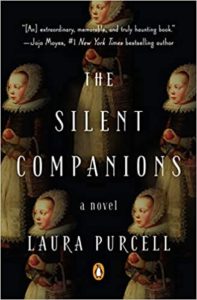
The origins of gothic horror date back to the late 1700s and early 1800s. In my history of horror novels blog post, I talk about the origins of gothic novels and how they paved the way for the horror genre we know and love today.
Early writers like Mary Shelley and E.T.A. Hoffman helped usher in an age of dark fiction that is still going strong.
The early gothic novels usually offered a mix of romance and horror, with a little death on the side. These were deep and complex stories, often infused with heavy social overtones.
Interesting books in this subgenre: Frankenstein, by Mary Shelley. The Devil’s Elixirs, by E.T.A. Hoffmann. The Haunting of Hill House, by Shirley Jackson. The Woman in Black, by Susan Hill. The Silent Companions, by Laura Purcell.
4. Lovecraftian
The universe is big and scary, and we are small and insignificant by comparison. That’s a common theme in the works of H.P. Lovecraft and his successors.
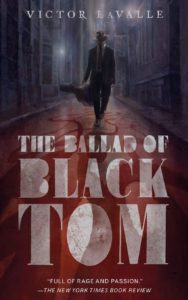
Despite his influence on the modern horror genre, Lovecraft didn’t really consider himself a horror writer in his day. He often referred to his own works as “weird fiction,” a term still in use to this day.
In a letter to the editor of Weird Tales magazine, Lovecraft wrote:
“Now all my tales are based on the fundamental premise that common human laws and interests and emotions have no validity or significance in the vast cosmos-at-large.”
Modern “Lovecraftian” horror writers use a lot of the ideas Lovecraft popularized in his days — ideas like the fear of the unknown and the insignificance of humanity. This subgenre is also known as “cosmic horror.”
Horror novels in this category: At the Mountains of Madness, by H.P. Lovecraft. Songs of a Dead Dreamer and Grimscribe, by Thomas Ligotti. The Ballad of Black Tom, by Victor LaValle.
5. Paranormal
Paranormal fiction is a loosely defined subgenre of horror. These stories and novels tend to overlap with other categories and subgenres. So we should start by defining the term “paranormal” and move on from there.
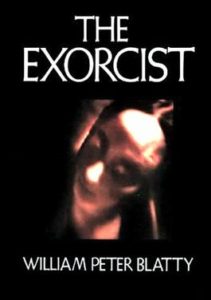
Merriam-Webster defines paranormal as something that is “not scientifically explainable.” That definition includes a lot of different things — everything from telekinesis to witchcraft to demonic possession.
But when it comes to fiction, the “paranormal” subgenre label usually applies to stories involving ghosts, haunted places, demonic forces and possession.
Truly, those things are not “scientifically explainable.” They can also be terrifying, for that exact reason.
Interesting books in this horror subgenre: The Exorcist, by William Peter Blatty. The Family Plot, by Cherie Priest. The Shining, by Stephen King. A Head Full of Ghosts, by Paul Tremblay. The Haunting of Hill House, by Shirley Jackson (it fits here, and also in the “gothic” category).
6. Post-Apocalyptic
Civilization is gone, replaced by something dark and dangerous. Yes, I’m talking about post-apocalyptic fiction, doomsday stories that “wipe the slate” clean and start over again. The ultimate reboot!
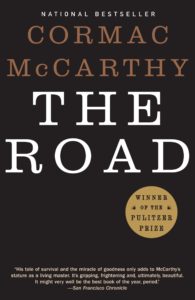
Some post-apocalyptic stories fall into the dystopia category. Others can be considered a subgenre of horror, because they include horrific and often terrifying elements (zombies, vampires, deadly plagues, etc.). To muddy the waters even more, some post-apocalyptic novels can stand alone within their own genre.
But let’s keep it simple. In this context, we’re talking about stories where civilization gets brought down by some terrifying force or entity. Those kinds of novels are definitely a subgenre of horror fiction.
Interesting books in this category: Swan Song, by Robert McCammon. Monument 14, by Emmy Laybourne. Feed, by Mira Grant. The Road, by Cormac McCarthy. I Am Legend, by Richard Matheson. The Passage, by Justin Cronin.
7. Psychological
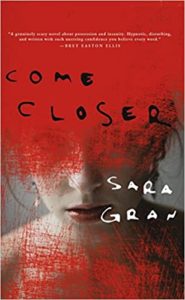
Put the monsters and demons aside for a moment. We are now entering a subgenre of horror novels where the terror often takes place within the mind.
A few years back, Bill Gibron created an excellent definition of “psychological horror” for the PopMatters website. Gibron wrote:
“It’s the kind of movie where the mind makes up for what the director doesn’t feature outright. It’s the monster in the closet where all you see is a pair of glowing red eyes. It’s the suggestion that a house is haunted and then walking through said location and hearing all kinds of concerning, creepy noises. It’s not a violent killer with a chainsaw chasing you around.”
Film journalist Ivy Lofberg also does a great job defining psychological horror for the Film Inquiry website: Lofberg wrote:
“In psychological horror, suspicion, distrust, self-doubt and paranoia about oneself, others or the world are present. This is referred to in Jungian psychology as characteristics of the archetypal shadow. These are the emotional and mental fears that keep people up at night and evoke a sense of dread in everyday life.”
The film concepts mentioned above apply to written works, as well. Psychological horror novels often give readers a deeper and more unsettling sense of fear, when compared to ghosts and ghouls. They also shed light on the human condition, by incorporating emotions we can all relate to.
Novels in this horror subgenre: Rosemary’s Baby, by Ira Levin. Come Closer, by Sara Gran. Silence of the Lambs, by Thomas Harris. All That We Remember, by Elenor Gill.
8. Psychos, Slashers, Serial Killers
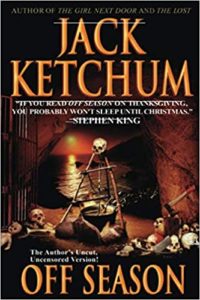
Maniacs. Madmen. Psychos. Sociopaths. Cannibals? Call them what you want. These human “monsters” have been part of the horror genre for a long time.
This subgenre overlaps with the psychological horror category above, but the two can be mutually exclusive as well. You could have a “slasher” type of novel that doesn’t fit the psychological horror label, or vice versa.
I’ve even thrown some cannibals into this category, with Jack Ketchum’s Off Season. It’s a wonderfully written horror novel, but not for the faint of heart!
In these types of novels, it’s people we fear — people with dark thoughts and motivations we can scarcely comprehend. People who want or need to see others suffer.
Novels in this horror subgenre include: Psycho, by Robert Bloch. American Psycho, by Bret Easton Ellis. The Silence of the Lambs, by Thomas Harris (again). Off Season, by Jack Ketchum. Final Girls, by Riley Sager. (There aren’t a lot of female writers in this group. But if you know some that I’ve overlooked, please leave a comment below.)
9. Sci-Fi Horror
Now we’re moving into one of my favorite subgenres of horror. I suppose you could also call it a subgenre of science fiction, for that matter. It blends the two genres, often with thrilling results.
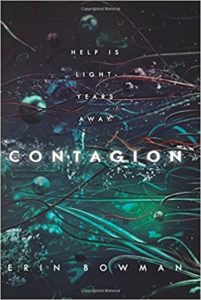
These stories combine sci-fi elements (like space travel and futuristic societies) with common horror elements (like creatures and aliens). You get the best of both worlds.
Sci-fi horor is a popular genre in the film world (Aliens, The Invisible Man, Underwater). But there aren’t that many writers producing sci-fi horror novels these days. Hopefully that will change in the future.
This subgenre is wide open, in terms of possibilities. It’s a blank slate for speculative fiction writers who want to blaze their own trail and do something that’s never been done before.
I’ve written extensively on this subgenre before, being such a fan of it. So be sure to check out this list of sci-fi horror story ideas, along with my shortlist of recommended books in the category.
Interesting novels in this subgenre: Blindsight, by Peter Watts. Contagion, by Erin Bowman. Nightflyers, by George R.R. Martin. Infected, by Scott Sigler. Carrion Comfort, by Dan Simmons. The Luminous Dead, by Caitlin Starling.
10. Supernatural
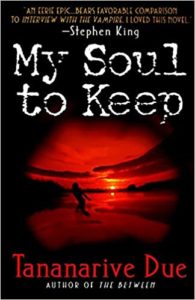
Earlier, I said that dividing horror novels into subgenres was a difficult task. Here’s another example.
According to the Merriam-Webster dictionary, the term supernatural refers to things that “appear to transcend the laws of nature.” That’s a fairly broad definition, one that overlaps with the “paranormal” category covered earlier.
For the sake of simplicity, I’ve classified the ghost / demon / haunting types of horror novels into the “paranormal” subgenre. In the “supernatural” category, I would place books that deal with vampires, werewolves, monsters, and other entities that defy the laws of nature.
Interesting novels in this subgenre: My Soul to Keep, by Tananarive Due. Dracula, by Bram Stoker. Salem’s Lot, by Stephen King. The Wolfen, by Whitley Strieber. Interview with the Vampire, by Anne Rice.
I hope you’ve enjoyed this little exploration into the different subgenres of horror fiction. Please feel free to leave a comment, suggestion or addition below.

Erin Halliday
Brilliant article – what a helpful guide to return to time and again!
Brandon Cornett
Thanks Erin. I’m glad you found it helpful.
Deborah Giles
I love this breakdown of horror subgenres. Nicely done.
DAN Waker
great artical thank you brilliant explanations got me interest very well written x